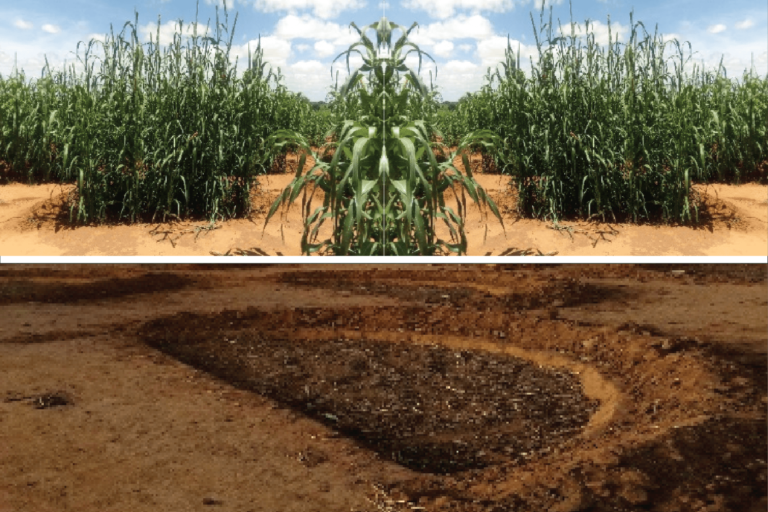
Research Details
- Recherche : Effect of zaï on soil restoration and land productivity
- Chercheur : BOUKARY ALPHARI Bouhary
- Categorie : SUSTAINABLE LAND MANAGEMENT AND RESILIENCE
- Année : April, 2020
- Localisation : DOSSO / NIGER
1. CONTEXT, PROBLEM AND OBJECTIVE
In arid and semi-arid areas, soils and arable land are increasingly subject to erosion and the disappearance of vegetation (Thevoz, 1997). This situation leads to smaller and irregular harvests, a reduction in pasture biomass and fuelwood reserves. Thus, in Sahelian conditions where soils are sensitive to erosion, anti-erosion devices are of capital importance for soil restoration. The Zaï technique constitutes an alternative for farmers to increase the surface area of exploitable soil. It is a particular form of cultivation in pockets concentrating runoff water and organic matter in a micro basin (Roose et al., 1993). It is in this context that the PAM in collaboration with the Faculty of Agronomy of the Abdou Moumouni University of Niamey jointly initiated research work with the objective of evaluating the effectiveness of Zaï on degraded agricultural land in Goubeydey site.
2. METHODOLOGY
The study was conducted in four villages in the Dosso region, namely Tchinkinikoy koira, Marafa koira, Goubeydey and Tegueze koira.
A survey in the form of focus groups was carried out to collect data relating to the causes of land degradation and the dynamics of denudation of the glacis in their region, the consequences of the phenomenon of land degradation, the means of combating it and the advantages of the activities. land restoration. Also, a survey was conducted individually with a sample of 27 beneficiary farmers chosen according to the villages concerned by the study. It aims to collect data on the degree of knowledge of the beneficiary population on CES/DRS techniques, particularly Zaï and the social-economic effects of the development.
Pour évaluer les effets des Zaïs sur les sols et la productivité du site de Goubeydey, un champ de Zaï comportant un témoin a été retenu dans chacun des 4 terroirs villageois. Dans chaque champ, trois (3) parcelles de 5m x 5m disposées sur une diagonale de la partie aménagée en Zaï et de celle du témoin ont été installées. A la récolte les paramètres de rendement du mil ont été mesurés



